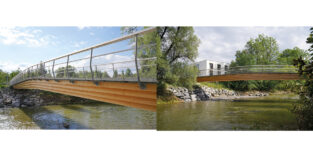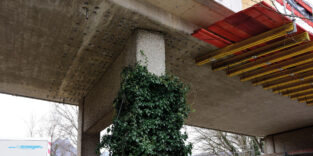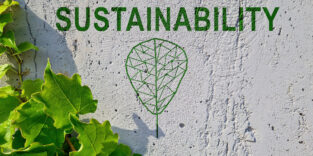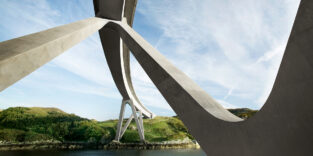Ökologische Optimierung von Tragwerken im Infrastrukturbau am Beispiel von Brücken und Portalkonstruktionen
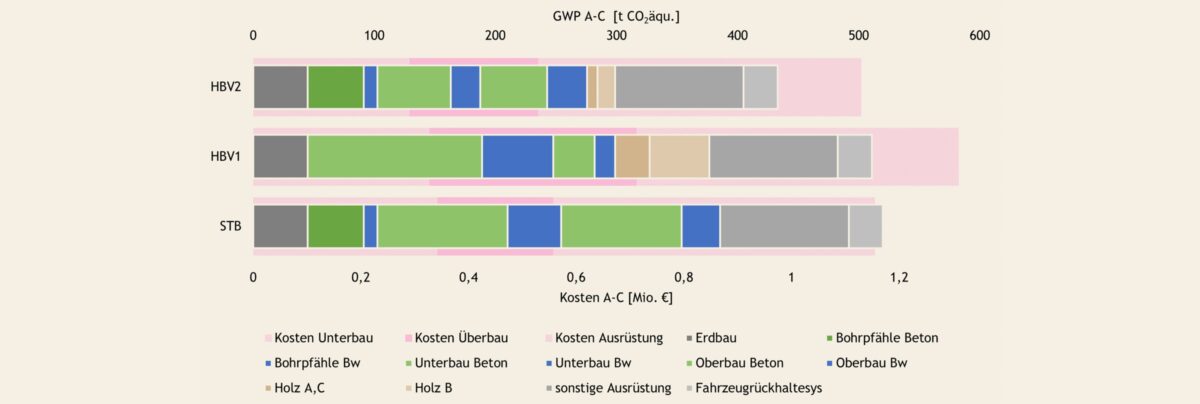
Bild 6. Lebenszyklusanalyse in Bezug auf CO2-Emissionen und Kosten einer zweispurigen 35 m Straßenbrücke (S37 B0502) mit dem LCCO2-Tool V0.1 (Vordergrundbalken: GWP, Hintergrundbalken: Kosten). Grafik: T. Zitterl Fig 6. Life cycle analysis with regard to CO2 emissions and costs of a two-lane 35 m road bridge (S37 B0502) using the LCCO2 tool V0.1 (foreground: GWP, background: costs). Source: T. Zitterl
Bauingenieur Jahrgang 99 (2024) Heft 10
Publikationsdatum: 07.10.2024
doi.org/10.37544/0005-6650-2024-10-53
Zusammenfassung Im vorliegenden Artikel wird anhand zwei beispielhafter Bauwerksarten, einer Brücke und eines Überkopfwegweisers, der Prozess der ökologischen Bewertung und Optimierung von Tragwerken im Infrastrukturbau dargestellt und mögliche Hürden thematisiert. Die Bauwerke werden in verschiedenen Materialisierungsformen und Ausführungsvarianten bezüglich ihrer ökologischen Performance mittels Lebenszyklusanalyse untersucht und Optimierungspotential aufgezeigt. Es zeigt sich, dass je nach Datengrundlage und Eingabeparameter die Ergebnisse ein und desselben Bauwerks stark variieren können, daher sollten derartige Werkzeuge mit großer Sorgfalt angewendet werden. Die Ergebnisse lassen darauf schließen, dass nicht die übergeordnete Materialwahl per se entscheidend ist, sondern einerseits der den Baustoffen zugrunde liegende Herstellungsprozess und andererseits die Entwicklung effizienter, langlebiger Tragsysteme. Erkennbar ist auch, dass ein reiner Fokus auf Optimierung des Überbaus nicht zielführend ist, da die Bauteile Unterbau und Ausrüstung für ~ 75 % der Emissionen des Bauwerks verantwortlich sind. Eine Optimierung scheint daher nur unter Einbeziehung dieser Bauteile sinnvoll.
Ecological optimization of supporting structures in infrastructure construction using the example of bridges and portal constructions
Abstract In this article, the process of ecological assessment and optimization of load-bearing structures in infrastructure construction is presented and possible hurdles are discussed using two exemplary types of structure, a bridge and an overhead signpost. The structures are examined in different materialization forms and design variants with regard to their ecological performance by means of life cycle analysis and optimization potential is shown. The results demonstrate that the outcomes for a given structure can vary significantly depending on the data set and input parameters used. Therefore, it is crucial to use these tools with great caution. The findings indicate that the key factor is not merely the choice of materials, but rather the manufacturing processes of these materials and the development of efficient, durable load-bearing systems. Additionally, focusing solely on optimizing the superstructure is not effective, as the substructure and equipment components contribute to approximately 75 % of the structure‘s emissions. To achieve successful optimization, these components need to be included.

